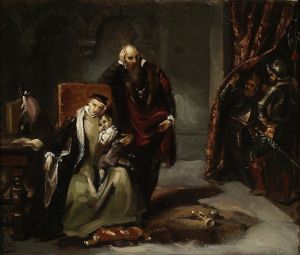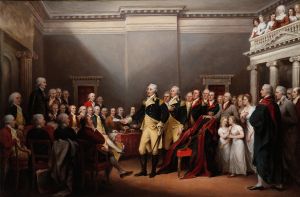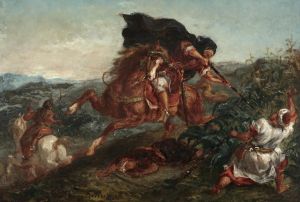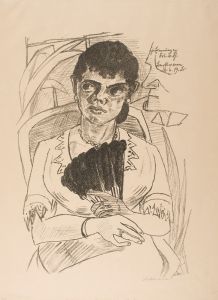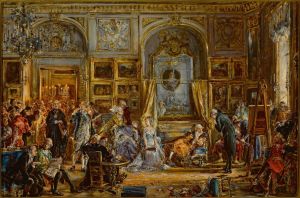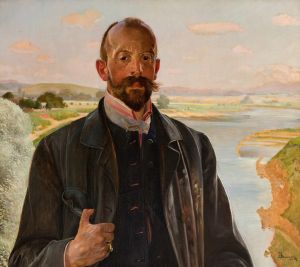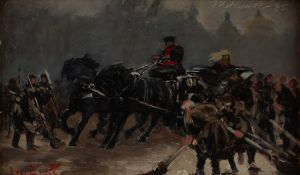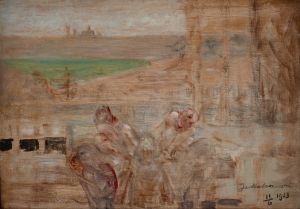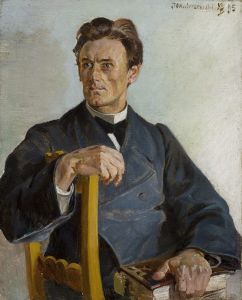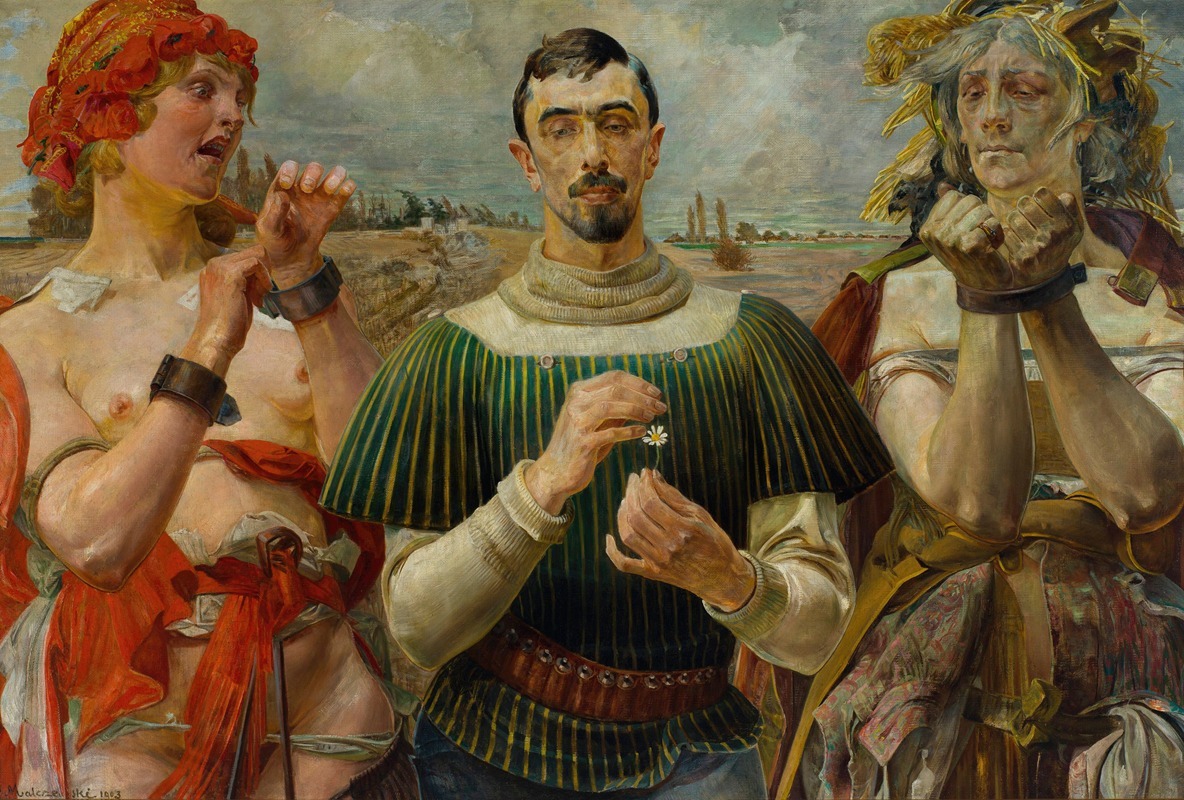
Polish Hamlet – Portrait of Aleksander Wielopolski
A hand-painted replica of Jacek Malczewski’s masterpiece Polish Hamlet – Portrait of Aleksander Wielopolski, meticulously crafted by professional artists to capture the true essence of the original. Each piece is created with museum-quality canvas and rare mineral pigments, carefully painted by experienced artists with delicate brushstrokes and rich, layered colors to perfectly recreate the texture of the original artwork. Unlike machine-printed reproductions, this hand-painted version brings the painting to life, infused with the artist’s emotions and skill in every stroke. Whether for personal collection or home decoration, it instantly elevates the artistic atmosphere of any space.
"Polish Hamlet – Portrait of Aleksander Wielopolski" is a painting by the renowned Polish artist Jacek Malczewski, created in 1903. Malczewski, a leading figure in Polish Symbolism, is celebrated for his deeply allegorical works that often explore themes of national identity, history, and existential reflection. This particular painting is a striking example of his ability to intertwine personal and national narratives within a single composition.
The subject of the painting, Aleksander Wielopolski, was a controversial Polish statesman who lived during the 19th century. Wielopolski served as the head of the Civil Administration of the Kingdom of Poland under Russian rule in the 1860s. His policies, which included efforts to modernize Poland and secure limited autonomy under the Russian Empire, were divisive. While some viewed him as a pragmatic reformer, others criticized him for his perceived collaboration with the occupying Russian authorities. His decision to implement conscription policies that targeted Polish insurgents is often cited as a catalyst for the January Uprising of 1863, a failed rebellion against Russian rule.
In "Polish Hamlet," Malczewski portrays Wielopolski as a tragic, introspective figure, drawing a parallel to Shakespeare's Hamlet. The comparison suggests a man torn by inner conflict and burdened by the weight of his decisions, much like the Danish prince. The painting reflects Malczewski's broader interest in exploring the psychological and moral struggles of individuals within the context of Poland's turbulent history.
The composition of the painting is rich in symbolism, a hallmark of Malczewski's style. Wielopolski is depicted in a contemplative pose, his expression somber and reflective. The background and surrounding elements, though not explicitly detailed in available descriptions, are likely imbued with allegorical significance, as is typical of Malczewski's work. The artist often used symbolic imagery to comment on Poland's political situation, its cultural heritage, and the existential dilemmas faced by its people.
"Polish Hamlet" is not merely a portrait of Wielopolski but also a meditation on the broader themes of duty, sacrifice, and the complexities of leadership during times of national crisis. By invoking the figure of Hamlet, Malczewski invites viewers to consider the moral ambiguities and personal costs associated with Wielopolski's actions and legacy.
Today, the painting is regarded as an important work within Malczewski's oeuvre and a significant piece of Polish art history. It exemplifies the artist's skill in blending portraiture with allegory to create works that resonate on both personal and national levels.






